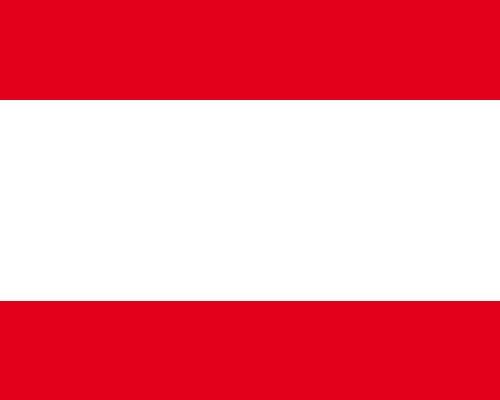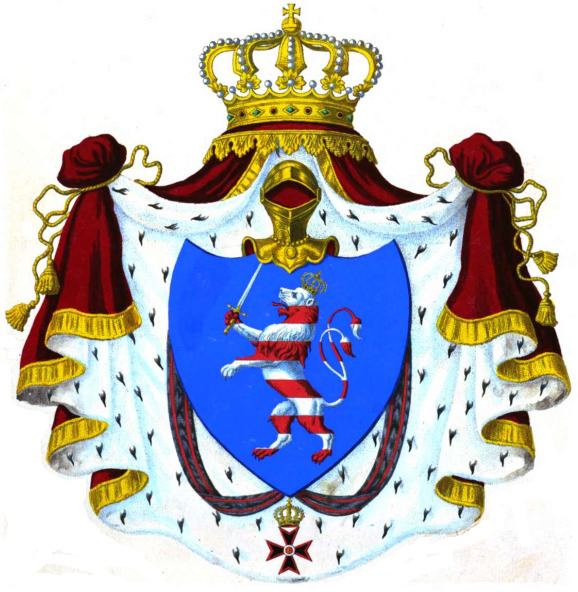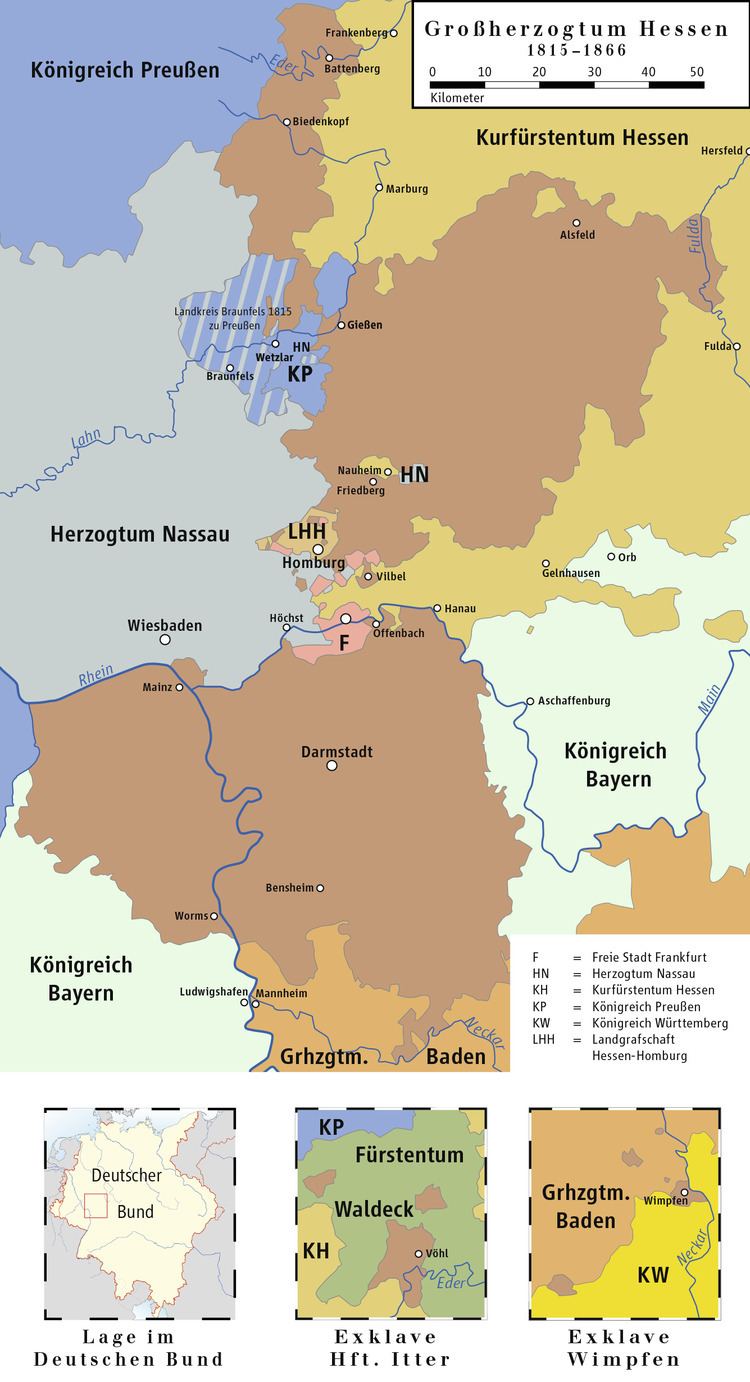Languages Hessian Area 7,688 km² | Founded 1806 Date dissolved 1918 | |
 | ||
Religion Protestant,Roman Catholic Government Constitutional Monarchy | ||
The Grand Duchy of Hesse and by Rhine (German: Großherzogtum Hessen und bei Rhein), or the Grand Duchy of Hesse (German: Großherzogtum Hessen) between 1806 and 1816, was an independent country and member state of the German Confederation as of 1806, when the Landgraviate of Hesse-Darmstadt was elevated to a Grand Duchy which it remained until 1918, when the monarchy was overthrown. Hesse lost its independence when it joined the German Empire in 1871. Before 1866, its northern neighbour was its former sister Landgraviate, since 1803 an Electorate, of Hesse-Kassel – for this reason, this state was sometimes colloquially known as Hesse-Darmstadt.
Contents

History

Hesse-Darmstadt was a member of Napoleon's Confederation of the Rhine during the Napoleonic Wars. Rapidly expanding during the mediatizations, Hesse-Darmstadt became an amalgamation of smaller German states, such as the Electorate of Cologne. The legal patchwork of the state culminated in a decree issued on 1 October 1806 by Louis I. The old territorial estates were abolished, which altered Hesse-Darmstadt "from a mosaic of patrimonial fragments into a centralized, absolute monarchy." During the Congress of Vienna it was forced to cede the Duchy of Westphalia, which Hesse-Darmstadt had received in 1803, to the Kingdom of Prussia. However, Hesse-Darmstadt received some territory on the western bank of the Rhine, including the important federal fortress at Mainz.

The Grand Duchy changed its name to the Grand Duchy of Hesse and by Rhine (German: Großherzogtum Hessen und bei Rhein) in 1816.

In 1867, the northern half of the Grand Duchy (Upper Hesse) became a part of the North German Confederation, while the half of the Grand Duchy south of the Main (Starkenburg and Rhenish Hesse) remained outside. In 1871, it became a constituent state of the German Empire. The last Grand Duke, Ernst Ludwig (a grandson of Queen Victoria and brother to Empress Alexandra of Russia), was forced from his throne at the end of World War I, and the state was renamed the People's State of Hesse (Volksstaat Hessen).

After World War II, the majority of the state combined with Frankfurt am Main, the Waldeck area (Rhine-Province) and the former Prussian province of Hesse-Nassau to form the new state of Hesse. Excluded were the Montabaur district from Hessen-Nassau and that part of Hessen-Darmstadt on the left bank of the Rhine (Rhenish Hesse), which became part of the Rhineland-Palatinate state. (Bad) Wimpfen—an exclave of Hessen-Darmstadt—became part of Baden-Württemberg, in the district of Sinsheim. After a plebiscite on 29 April 1951, Bad Wimpfen was transferred from Sinsheim district to Heilbronn District. This change to Heilbronn was carried out on 1 May 1952.
Transport

Because of the disjointed nature of the state, it did not develop its own state railway to begin with, but set up joint railway projects with its neighbouring states: These were the:
In addition the state encouraged numerous other projects by the privately owned Hessian Ludwig Railway Company. Finally, in 1876 the state founded its own company, the Grand Duchy of Hesse State Railways, which continued to expand the network until it was finally merged into the Prussian-Hessian Railway Company in 1897.
Subdivisions of Hesse
The Grand Duchy of Hesse was divided into three provinces:
